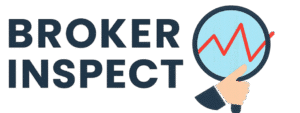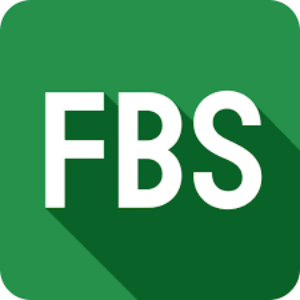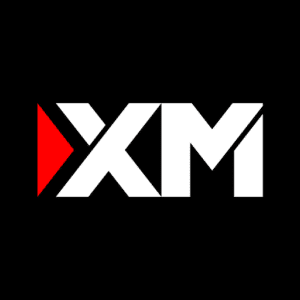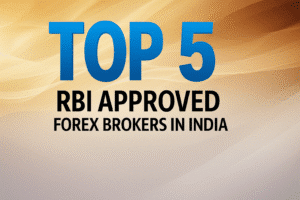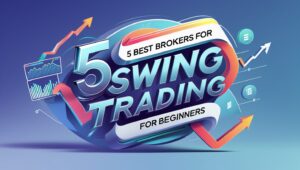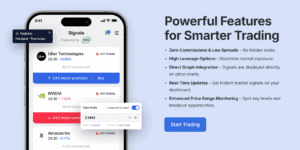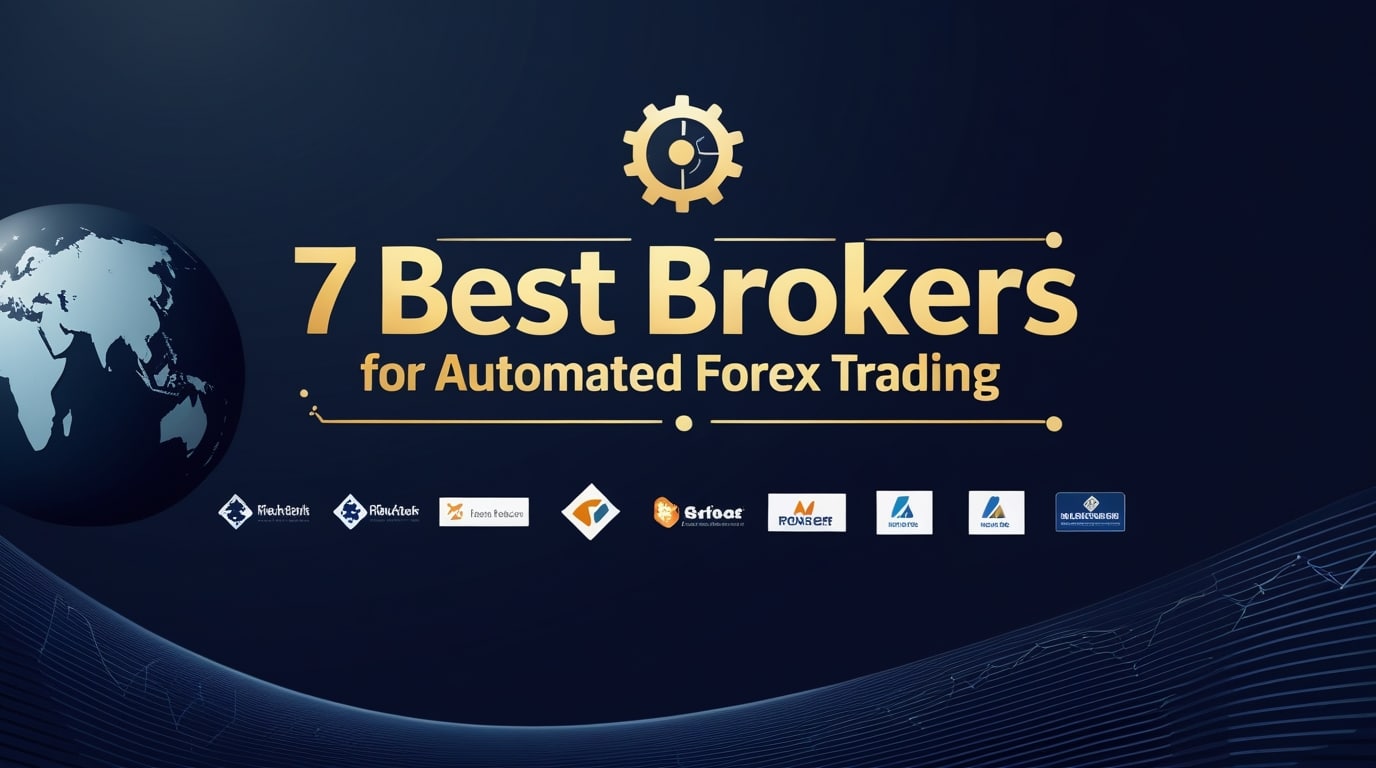
Automated forex trading leverages computer algorithms to execute currency trades with minimal human intervention. These systems (also known as Expert Advisors or trading robots) follow pre-set rules to buy or sell currencies, aiming for speed and consistency. The result can be faster order execution, reduced emotional bias, and around-the-clock trading. In fact, algorithmic models are already driving a large share of forex volume. Reuters reports that “complex, computer-driven models will increasingly pump up the forex market’s volume”. As Darren Jer of ICAP notes, “the key is algo trading” for managing fragmented market liquidity. (At the same time, some experts caution that hype can outpace demand, with Citigroup’s Gavin Wells calling it “the latest buzz word” in FX.)
Choosing a regulated U.S. broker with robust platforms is essential for automated strategies. In the U.S., the Commodity Futures Trading Commission (CFTC) and National Futures Association (NFA) strictly oversee forex dealers. Top platforms like MetaTrader 4/5 (MT4/MT5), cTrader, or proprietary systems let you run automated forex trading software (i.e. Expert Advisors or bots) using market data. Key factors include low costs (spreads/commissions), reliable execution, supported platforms, and risk-management tools. As an educational resource notes, “algorithmic trading offers benefits such as increased speed, reduced trading costs, [and] accuracy…”, but traders should also watch for overuse and test systems thoroughly.
The following U.S.-regulated brokers are among the best for automated forex trading, each catering to different experience levels. We compare their fees, platforms (MT4/MT5, cTrader, proprietary, etc.), feature sets, and automation support. Real industry experts and published data guide these picks, ensuring we highlight both beginner-friendly and advanced options.
Overview: 7 Best Brokers for Automated Forex Trading
| Broker | Platforms & Regulation | Costs & Spreads | Key Automation Features | Best For |
|---|---|---|---|---|
|
OANDA
CFTC/NFA
25+ years experience
|
MT4
TradingView
OANDA Trade
Free VPS hosting
|
No Commission
EUR/USD: ~1.12 pips
No minimum deposit
84ms execution speed
|
|
All-Round Choice
Stable environment, tight spreads, multi-platform support
|
|
FOREX.com
CFTC/NFA
StoneX Group
|
MT4
MT5
TradingView
NinjaTrader
Multi-platform flexibility
|
Raw ECN: 0.0 pips + $7/100k
Standard: ~1.2 pips
$100 minimum deposit
80+ currency pairs
|
|
Tightest Spreads
Cost-conscious traders, HFT scalping, multi-asset exposure
|
|
Interactive Brokers
SEC/NFA
World’s largest electronic
|
TWS API
Python
FIX
50,000+ instruments
|
$2 per 100k USD (~0.2 pips)
Spreads from ~0.1 pips
No minimum deposit
Volume discounts
|
|
Advanced Traders
Large volume, institutional pricing, complex algorithms
|
|
IG (Trading.com)
CFTC/NFA
Formerly IG US
|
MT5
TradingView
Proprietary
Modern MT5 focus
|
No Commission
EUR/USD: ~1.2 pips
$50 minimum deposit
50+ pairs available
|
|
MT5 Enthusiasts
Modern platform tools, swing traders, low barriers
|
|
Charles Schwab
SEC/NFA
America’s largest broker
|
thinkorswim
thinkScript
60,000+ markets
|
No Commission
EUR/USD: ~1.4 pips
No minimum deposit
65+ currency pairs
|
|
Support & Research
All-in-one accounts, exceptional customer service
|
|
TastyFX
CFTC/NFA
Tastytrade group (2022)
|
MT4
TradingView
ProRealTime
Multi-platform integration
|
$0 deposit, $6 per 100k
EUR/USD: from ~0.8 pips
Very competitive pricing
IG backend execution
|
|
Beginners
Low-cost entry, modern tools, user-friendly package
|
|
Nadex
CFTC Exchange
Binary & spread options
|
Nadex Platform
Web/Mobile
Derivative contracts only
|
Fixed $2 per contract
No spreads (built into premium)
$250 minimum deposit
Defined risk structure
|
|
Risk Control
Algorithmic risk-controlled strategies, capped losses
|
How Automated Forex Trading Works
Automated trading systems use predefined algorithms to open and close forex positions. Traders program rules based on price, time, or indicators, and the software automatically scans the market for signals. For example, a trader might set an Expert Advisor (EA) on MT4 to buy EUR/USD whenever the 50-day moving average crosses above the 200-day. Once live, the EA executes trades on the trader’s behalf without emotion.
Advantages include round-the-clock monitoring, lightning-fast order entry, and consistent execution. As one broker notes, MT4 and MT5 come with built‑in backtesting and strategy testers to refine an automated forex trading system before going live. Among the benefits:
- Speed & Efficiency: Automated bots can analyze multiple pairs and indicators simultaneously, reacting to news events and price changes in milliseconds.
- Emotionless Trading: Predefined logic removes fear/greed. One educational source highlights that algorithms eliminate “trading bias” and manual errors.
- Backtesting & Discipline: Algorithms let you run strategies on historical data to optimize performance. Once deployed, they enforce discipline by following the strategy consistently.
Of course, automated systems also carry risks: technical glitches, over-optimization, and unexpected market conditions can all cause losses. Proper safeguards (stop-losses, VPS hosting, regular monitoring) are crucial. But when set up correctly, these systems let traders scale and automate their forex automated trading strategies.
Choosing the Best Broker for Automated Forex Trading
When selecting an automated trading forex broker, look for these features:
- Regulation and Safety: U.S. brokers must be CFTC/NFA-registered. This ensures segregation of funds and compliance audits.
- Platform Support: Robust platforms are key. MetaTrader 4 and 5 remain industry standards for automation (EA support). Some brokers also offer cTrader, NinjaTrader, or proprietary systems. For example, TastyFX (IG’s U.S. arm) supports MT4, TradingView, and even ProRealTime. Others like Schwab use thinkorswim with their own scripting (thinkScript) for algorithmic strategies.
- Costs (Spreads/Commissions): Automated strategies often trade frequently, so fees add up. We prefer brokers with either ultra-tight spreads or low per-trade commissions. As one review shows, OANDA’s standard EUR/USD spread averages only ~1.12 pips with no commissions. Interactive Brokers, by contrast, charges a low flat $2 per 100k USD traded (≈$2/standard lot), often beating ECN competitors. Nadex (for options) uses fixed fees instead of spreads.
- Automation & API: Does the broker provide APIs or third-party integration? IBKR, for example, offers REST/Python/FIX APIs; OANDA has a powerful REST API; some platforms allow TradingView webhook links. Also check for free VPS hosting or discount vouchers, which many “best” brokers provide for 24/5 algo trading.
- Execution Quality: In fast markets, speed matters. One analysis found OANDA’s USD pairs executed in ~84 ms – faster than most U.S. brokers. Lower slippage and fewer requotes benefit automated strategies.
With these criteria, we analyzed dozens of brokers and identified seven top choices for U.S. traders, spanning from beginner-friendly (tight spreads, simple interfaces) to advanced (deep liquidity, extensive asset access). The highlights of each broker are summarized below.
Top Brokers for Automated Forex Trading
1. OANDA
- Regulation: CFTC/NFA (USA), plus global (FCA, ASIC, etc). Over 25 years in business.
- Platforms: OANDA supports MT4, TradingView, and its proprietary OANDA Trade app. All allow automated strategies. It also offers a free VPS and integration with Autochartist signals.
- Costs: No commission on the standard account. Spreads are among the lowest in the U.S. – roughly 1.12 pips on EUR/USD on average (with raw ECN-like pricing available for larger traders). No minimum deposit.
- Automation Tools: MT4’s Expert Advisors (EAs) run seamlessly on OANDA’s demo/live accounts. Their REST API is robust for custom bots. Plus, OANDA provides extensive historical data for backtesting.
- Key Feature: Lightning-fast execution – in tests, OANDA executed market orders in ~84 ms, minimizing slippage for scalpers and HFT bots.
- Ideal For: Traders who want a well-regulated, stable environment. OANDA’s long track record, multi-platform support (including automated systems), and tight spreads make it a solid all-round choice.
2. FOREX.com (StoneX)
- Regulation: CFTC/NFA (USA). Renowned global brand (StoneX).
- Platforms: Offers MT4, MT5, TradingView, NinjaTrader, and its own Forex.com platform. This flexibility means any automated forex trading software you prefer (MT4/MT5 EAs or TradingView scripts) will work.
- Costs: Competitive pricing. The Raw ECN account advertises zero pip spreads (e.g. 0.0 on EUR/USD) plus a $7 per 100k commission, rivaling institutional pricing. The standard account has a $100 minimum deposit with average spreads (~1.2 pips on EUR/USD) and no commission.
- Automation Tools: Native API (REST/MT4), plus support for NinjaTrader’s automated strategies. Autochartist and Trading Central can feed signals. Offers VPS connectivity.
- Key Feature: Vast market access – over 80 currency pairs and futures (crypto, commodities, indices). You can automate across diverse markets from one account.
- Ideal For: Cost-conscious traders needing advanced platform choice. As one review notes, “FOREX.com is my top pick if you want the tightest spreads” and multi-asset exposure. Its Raw account is especially useful for high-frequency or algorithmic scalping.
3. Interactive Brokers (IBKR)
- Regulation: SEC, FINRA, NFA (USA). World’s largest electronic broker.
- Platforms: IBKR Trader Workstation (desktop), IBKR GlobalTrader (app), and powerful APIs (TWS API, FIX, Python, etc.). Thinkorswim and other Schwab-branded tech are separate; IB has its own interface which is highly customizable.
- Costs: Ultra-low commissions. Forex commission starts at $2 per 100,000 USD traded (~0.2 pips commission), among the cheapest in the industry. Spreads are tight (from ~0.1 pips). No minimum deposit. Volume-based discounts further lower fees for active traders.
- Automation Tools: Access to 50,000+ global instruments, including 80+ currency pairs. Supports client-side automated trading via its API; many algo traders use IB for straight-through processing. Real-time data and order management are available for bots.
- Key Feature: Comprehensive markets and research. IB provides free Morningstar/Zacks research and sophisticated algo order types. Traders can route or smart-connect to various liquidity venues.
- Ideal For: Advanced traders and institutions. Its highly competitive pricing and extensive assets make it top for large-volume and algorithmic strategies. (The tradeoff is a steeper learning curve with TWS.)
4. IG (Trading.com)
- Regulation: CFTC/NFA (USA) under the brand Trading.com (formerly IG US).
- Platforms: Primarily MetaTrader 5 (no MT4 in the U.S.). Also offers the proprietary Trading.com web/desktop platform, but MT5 is the focus for automated FX.
- Costs: Competitive. EUR/USD spreads from about 1.2 pips (on their standard T1 account) with no commission. Minimum deposit only $50.
- Automation Tools: Traders get full MT5 EA support (MQL5) for automated strategies. Trading Central supplies sentiment indicators and signal feeds built into MT5. Also supports TradingView charting and alerts.
- Key Feature: Modern MT5 suite. The broker highlights MT5’s speed and depth-of-market tools (e.g. native economic calendar and order-book view) to enhance algo trading.
- Ideal For: MT5 enthusiasts and swing traders. If you prefer MetaTrader 5’s environment and want institutional-grade tools, Trading.com delivers a US-regulated way to use MT5 with low barriers (50+ pairs, low deposit).
5. Charles Schwab (Thinkorswim)
- Regulation: SEC, FINRA, NFA (via Charles Schwab Futures & Forex LLC). Schwab is one of America’s largest brokers.
- Platforms: Thinkorswim desktop/web/mobile. Thinkorswim is comparable to MT4 in features, and it uses thinkScript, a proprietary language, to automate strategies (similar to MT4’s EAs). Schwab’s basic web platform is also available but less feature-rich.
- Costs: No commissions on forex (Schwab uses spread pricing). Typical spreads are around industry average (e.g. ~1.4 pips EUR/USD, as seen in tests). No minimum deposit.
- Automation Tools: Over 60,000 markets offered (stocks, futures, options, crypto), including 65+ currency pairs. Automating forex trades is done via thinkScript on thinkorswim (which lets you code strategies step-by-step). Schwab also provides exceptional support – 24/5 dedicated forex desk and research.
- Key Feature: Unparalleled research and customer support. Traders have access to Schwab’s award-winning research and even a “Trade Desk” to discuss forex ideas. Thinkorswim’s charts have 400+ indicators, making it very versatile.
- Ideal For: Traders who value support and all-in-one accounts. If you already use Schwab for stocks/crypto and want to add automated FX, this platform’s robustness (and the ease of automation via thinkScript) makes it a compelling, end-to-end solution.
6. TastyFX (Tastytrade)
- Regulation: CFTC/NFA (USA) under IG US branding. A newer entrant (2022) by the Tastytrade group.
- Platforms: MT4, TradingView, ProRealTime, plus the proprietary TastyFX web and mobile apps. In fact, TastyFX emphasizes integration: “we’ll connect you to TradingView, MT4, ProRealTime, and more”.
- Costs: Very competitive for beginners. Offers a $0 deposit account, and boasts spreads “as low as 0.8 pips” on major pairs. (E.g. EUR/USD from ~0.8 pips.) Commission on MT4 is a flat $6 per 100k round-turn, better than many peers.
- Automation Tools: All MT4 Expert Advisors work out-of-the-box. The TastyFX platform is designed for algorithmic trading (“Automate your trading with MT4’s algorithms”). They include a free suite of MT4 indicators and add-ons. VPS hosting is available.
- Key Feature: Best-of-both-worlds offering. With IG’s backend, TastyFX provides institutional-grade execution (fast fills) and also wraps it in a user-friendly package. The emphasis on multiple platforms (MT4, TradingView, ProRealTime) means any automated forex trading software can be used.
- Ideal For: Beginners and mid-level traders eyeing automation. The low-cost structure and modern tools (with the Tastytrade branding) make it very accessible. It’s a great entry point for automated trading via MT4 with the backing of IG’s infrastructure.
7. Nadex
- Regulation: CFTC-regulated exchange (binary and spread options). Not a traditional broker – it’s an exchange for derivative contracts.
- Platforms: Nadex’s own web/mobile trading platform, designed around binary options and spreads. You speculate on forex price movements rather than hold spot positions.
- Costs: Simple fixed fees. For example, flat $2 per binary/spread contract round-turn (there are no spreads). No commissions like brokerages – cost is built into the premium. Minimum deposit is $250 for a funded account (demo is free).
- Automation Tools: No automated bots in the usual sense, since trades are binary contracts, but the simplicity allows quick decision-making.
- Key Feature: Defined risk. Because each option’s max loss is capped to the premium paid, it’s a beginner-friendly way to automate ideas (e.g. “if EUR/USD is above 1.1000 at 2pm, yes/no”). As one guide explains, beginners benefit from built-in risk management: if wrong, you only lose the price paid.
- Ideal For: Traders who want algorithmic risk-controlled strategies. For instance, you could write a script to automatically buy a binary when conditions meet your criteria, and the worst-case loss is known in advance. It’s a unique approach for FX automation.
Conclusion and Key Takeaways
Successful automated forex trading hinges on pairing the right strategy with a capable broker. Here are some practical takeaways:
- Start Small, Test Thoroughly: Always backtest your automated system on historical data and use a demo account. Most platforms (MT4/5, TradingView, etc.) provide simulators. Gradually transition to live trades with minimal risk.
- Choose the Right Platform: MetaTrader 4/5 remain industry standards for automated trading. Brokers like OANDA, Forex.com, and TastyFX support MT4/5 natively. If you prefer a different system (thinkScript on thinkorswim, proprietary APIs), ensure your broker supports it.
- Watch Costs Closely: Frequent trading means fees compound. Compare spreads and commissions. For example, OANDA and Trading.com offer commission-free spreads around 1–1.4 pips, whereas IBKR charges ~$2/lot with sub‑0.2 pip spreads. Pick the structure that suits your volume.
- Leverage and Risk: U.S. brokers cap leverage at 50:1 on majors, which is usually sufficient. Use stops and risk management – automated ≠ “risk-free.” Tools like VPS hosting can keep your bots running 24/5.
- Support and Education: Look for brokers with good FX support and learning resources. OANDA and Forex.com, for example, offer extensive education and 24/5 chat. Schwab and IB give top-tier market research (Morningstar, Zacks). A helping hand can be invaluable, especially if you’re new to algo trading.
Each of the seven brokers above meets high standards of reliability and automation support. Beginners might favor OANDA or TastyFX for ease of use and fixed spreads, while experts may gravitate to IBKR or Forex.com for advanced tools and multi-asset access. Ultimately, the “best” broker depends on your strategy’s needs. By choosing a regulated platform, understanding the fee structure, and rigorously testing your system, you set the foundation for automated trading success.
FAQ
What is automated forex trading?
Automated forex trading (or algorithmic FX trading) uses computer programs to buy and sell currency pairs without manual intervention. Traders create or obtain expert advisors (EAs) or scripts that follow specific rules (time, price levels, indicators). Once activated on a platform like MT4 or MT5, the software automatically monitors the market 24/5 and executes trades when conditions are met. This allows precise backtesting and eliminates emotional decision-making.
Is automated forex trading legal and safe in the U.S.?
Yes. U.S. regulations permit automated FX trading as long as you use regulated brokers. All major platforms (e.g. OANDA, Forex.com, IBKR) are CFTC/NFA-registered. The software itself must not engage in prohibited practices (like market manipulation). As long as your strategy follows the rules, automating is legal. Safety comes down to using a reputable broker (inspections and segregated accounts) and thoroughly testing your algorithm before going live.
What costs are involved with these automated trading brokers?
Fees vary by broker. Some charge only a spread (no commission), while others use commissions plus raw spreads. For example, OANDA’s standard account has no commission and average EUR/USD spreads around 1.1 pips. In contrast, Interactive Brokers offers ultra-low commissions (from ~$2 per $100k traded) with sub-0.2 pip spreads. Nadex (an FX options platform) uses fixed fees (about $2 per contract) instead of spreads. Always check the broker’s published spreads and commissions. Low overall cost is crucial for high-frequency automated strategies.
Which trading platform should I use for automated strategies?
MetaTrader 4 and 5 are the industry standards for automation. Both support Expert Advisors (trading robots) and have built-in strategy testers. Many U.S. brokers (OANDA, FOREX.com, TastyFX, Trading.com) offer MT4/5. For example, TastyFX highlights that you can “automate your trading with MT4’s algorithms and our tight spreads”. Beyond MT4/5, some brokers have their own scripting (Schwab’s thinkScript) or APIs. Choose a platform that fits your coding skills and strategy needs.
